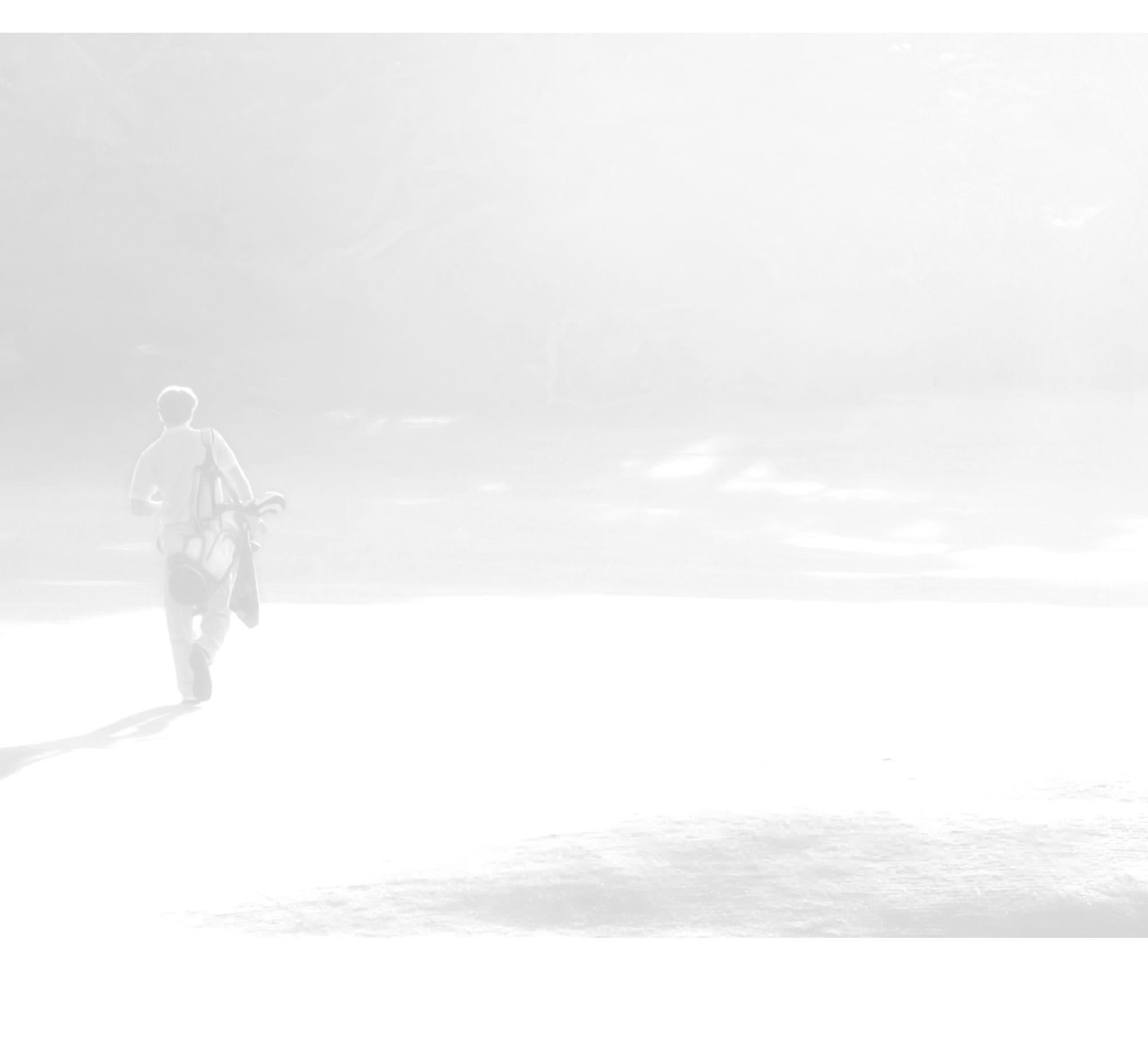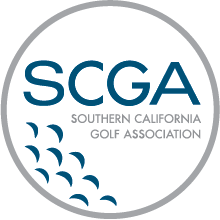SCGA History
Part 3: 1940-1959
- Chapter 1: Soldiering On
- Chapter 2: Through Fiery Troubles
- Chapter 3: The Development Battle
- Chapter 4: The Desert Blooms
- Chapter 5: The "Auto-ette" Appears
- Chapter 6: A Second "Golden Age" of Golfers
- Chapter 7: The Professional Influence
- Chapter 8: National Championships and Professional Events
- Chapter 9: Winning the Proposition 6 Battle
- Epilogue: Even Greater Expansion to Come
SCGA History: Part 3
Prologue -- From Darkness...

For most of the United States -- and, indeed, the world -- the year 1940 was a dark moment in history. After more than a decade of the Great Depression, the nation was only just emerging into a more hopeful future.
Around the world, things continued to look bleak. Just months after invading Poland, Germany overwhelmed many small European countries and then marched into Paris, forcing France under the jackboot. The Japanese were making ominous noises in the Orient, although most Americans paid little attention to that nation's military buildup.
America itself was, at best, sharply divided over the conflict in Europe. The horrors of war were still in the minds of many who had fought in the so-called "War to End All Wars" or those who had lost loved ones in Europe. So fragmented was the nation that the "Lend Lease" bill in 1941 to send war material to England in exchange for leases on military bases passed the Congress by a single vote. Not until December 7, 1941 -- a date which President Franklin Delano Roosevelt said the following day "would live in infamy" -- would Americans full embrace the crusade that would become World War II.
...to Light
Southern California struggled through the depression years but the outlook here in 1940 was more positive. The burgeoning military-industrial complex (a phrase that would be made famous by President Dwight D. Eisenhower nearly two decades later), the area's rich agricultural bounty, the motion picture and entertainment industry and the long-held belief that California was a "Shangri-La" became a magnet for millions of people from across the nation and around the world.
While the nation's population grew just 7.28 percent in the decade from 1930 to 1940, California's population grew what seemed like an astounding 21.6 percent. The city of Los Angeles' population alone grew 20.9 percent during the decade, to 1,496,792. But that was but a foreshadowing of things to come.
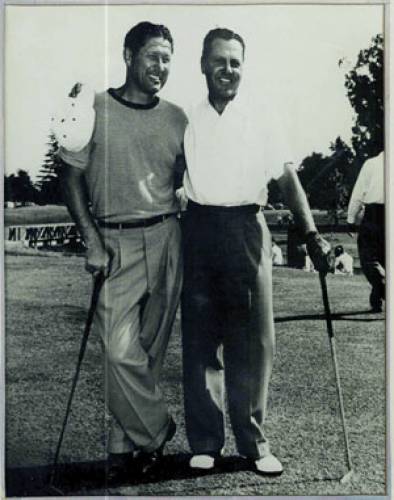 From 1940 to 1950, while the nation's population was expanding at a 14.5 percent rate, California's population increased a staggering 52.8 percent, from just under seven million in 1940 to 10,558,223 a decade later. The growth rate barely let up as the state grew another 48.8 percent in the 1950s; altogether from 1940 to 1960, California saw its population grow 127.5 percent to 15,717,204 people.
From 1940 to 1950, while the nation's population was expanding at a 14.5 percent rate, California's population increased a staggering 52.8 percent, from just under seven million in 1940 to 10,558,223 a decade later. The growth rate barely let up as the state grew another 48.8 percent in the 1950s; altogether from 1940 to 1960, California saw its population grow 127.5 percent to 15,717,204 people.
The other seminal shift in Californians' lifestyle was the emergence of the automobile. Unlike eastern metropolises, which were building higher and higher buildings, Californians were spreading out. A 40-mile trip, which back east would have been considered an all-day affair preceded by much planning, became just a quick jaunt for Southern Californians.
The Los Angeles Times caught the fever. When the Arroyo Seco Parkway (now called the Pasadena Freeway), the region's first freeway, opened on Dec. 30, 1940, the paper heralded the event with a front-page banner headline.
Car-happy Southern Californians quickly discovered that they didn't need to live close to their work or their recreational pursuits. Automobiles and cheap gasoline meant that a person could drive anywhere to shop or play golf. That mobility would have a profound influence on golf course, real estate and business construction during the next two decades.
Chapter One -- Soldiering On
It didn't happen immediately, however. While the game of golf also emerged from dark times to unparalleled growth, during these two decades, clubs continued to struggle and close during the early part of the 1940s -- to the point where by 1943 the SCGA had just 23 member clubs. Many other clubs would have closed but for the actions of handfuls of club members who rallied to keep them alive. Invariably, those clubs that did survive were those where the club was more than just a place to play golf; instead, it was a family, a fellowship, that had to be preserved at all costs.
The year 1943 proved to be the nadir. Despite the dwindling numbers, men like Lakeside Golf Club's Maurie Luxford, San Gabriel CC's Texas Schramm, Virginia CC's John Clock and many others spent hundreds of hours annually insuring the strength of the SCGA's programs and activities. Clock, who was SCGA president in 1946, also served on the USGA executive committee from 1951-59 and was elected USGA President in 1960-61, the only Southern Californian to serve in that position.
By 1945, SCGA President Charles Lathrop would note, "The war brought a great increase in the number of golfers permanent residing in the area we serve; so much so, that most of our clubs in the metropolitan area have full rosters and waiting lists in some instances... There is a great need for more golf courses, both public and private and a scarcity of acreage of suitable character both in respect to cost and location within reasonable distances."
However, the recovery didn't happen without several tragedies which rocked the Southern California golf community.
Chapter Two -- Through Fiery Troubles
In February, 1942, Madison Finlay, a member at Redlands CC, received a phone call. "Early one morning, Majorie Helm called to ask me where my golf clubs were," relates Finlay in Redlands Country Club: A Centennial History. "I said, 'why, they're in the trunk of my car. Why?' She said, 'Well, I just thought I'd ask because the clubhouse is burning down...' My clubs were safe from the first, but nothing else was. When I got to the scene, every inch of it was ablaze."
Redlands was only one of several clubs to suffer disastrous fires in their clubhouses . Fires in 1944 gutted clubhouses at The Victoria Club and Hillcrest CC; the latter made front-page headlines in the Los Angeles newspapers as more than 300 people attending a party were forced to flee. Oakmont CC's clubhouse went up in smoke in 1947.
What was lost in these fires were more than just buildings, which could be, and were, replaced. Gone also were all records and historical artifacts; in the case of Redlands and Victoria (the former a founding member of the SCGA and the latter having been founded just a few years after the turn of the century) that meant that much of the SCGA's early history was also destroyed.
Historical Note: Johnny Dawson, SCGA Greatest Golfer?
Chapter Three -- The Development Battle
The Southland continued to grow during the "Baby Boomer" era and, while it was obvious that more golf courses were needed, real estate developers were snapping up available land. From San Diego to Los Angeles, many clubs were paved over for roads, houses and businesses. Moreover, penal taxation during the 1950s caused many golf clubs to go under; not until the passage of Proposition 6 to amend the California constitution in 1960 was the long-term success of golf in this region assured.
Southern Californians evidenced little, if any interest, in maintaining the heritage of its legendary golf course designers. Among the clubs which fell to the developer's wrecking ball were California Country Club (aka Cheviot Hills CC) in Los Angeles, which had been remodeled by Max Behr, and Fox Hills GC, a 36-hole complex in Culver City designed by George Thomas, Jr. (it's now the site of the Fox Hills Mall).
Counterbalancing those losses were many new courses built in the 1950s, some of which remain among the region's finest: public facilities such as Torrey Pines GC and Rancho Park GC and private clubs like Bakersfield CC, El Caballero CC and Glendora CC.
Chapter Four -- The Desert Blooms
Hard as it is to believe today when one looks at the nearly 100 golf courses in the Coachella Valley, there was just one, O'Donnell Golf Club, at the end of World War II. But visionaries such as Johnny Dawson (see page 8), Ernie Dunlevie and others were convinced that the desert could became an oasis, and thus began the great desert flowering of golf courses.
Beginning with Thunderbird CC and Eldorado CC, the desert saw new courses spring up every year, a growth pattern that has continued virtually nonstop since that time. Many of these were surrounded by homes, while others were the focal points of destinations resorts as the area became a prime vacation spot, especially for "snowbirds" from the cold climes of the northern United States and Canada.
In addition to Dawson, Dunlevie and other developers, two other men were instrumental in putting the Coachella Valley on the map. One was President Dwight D. Eisenhower, who vacationed regularly in the desert and whose love of golf gave the game a shot in the arm. The other was entertainer Bob Hope, who symbolized Hollywood's love of the desert as a retreat and through his Bob Hope Classic pro tournament helped raise millions of dollars for desert charities.
Chapter Five -- The "Auto-ette" Appears
Although some will argue whether it was a blessing or curse, the 1950s saw the debut of the "auto-ette" in Southern California. First introduced a few years earlier in Texas, the predecessor of today's golf carts was an adaptation of the gasoline-powered ice cream cart. Most clubs approved them only for use by those with arthritis or other physical disabilities (at The Los Angeles CC, they were known as "Arthritis Specials"). Clubs with tunnels eventually had to widen them to make room for golf carts but as the decade ended, it was clear that the golf cart was here to stay.
Historical Note: SCGA Amateur Championship (1940-1959)
Chapter Six -- A Second "Golden Age" of Golfers
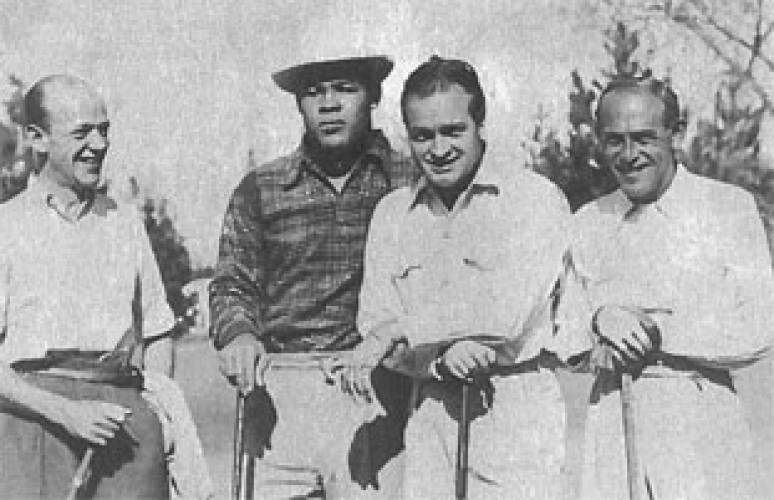
While the 1940-1959 era was a down-and-up time for golf courses, those 20 years were among the most fruitful for Southern California golfers, some of whom -- such as Roger Kelly and Pat Abbot -- first came to prominence in the late 1930s and others whose stars rose during the 1940s and 1950s.
In addition to Johnny Dawson, Ted Richards, Gene Andrews, Frank Taylor and Bud Bradley (each of whom is profiled in this segment of the SCGA's centennial history), other notable names of the era were:
- Smiley Quick, who won the 1940 and 1943 SCGA Amateur Championships, was runner-up to Bobby Gardner in the 1947 California Amateur, captured the 1946 U.S. Amateur Public Links title and played on the 1947 Walker Cup team;
- Bobby Gardner, the Bel-Air CC champion, who won the SCGA Amateur in 1946 and the California Amateur in 1947 and 1950, eventually moved back east and went on to represent the U.S. in the 1961 and 1963 Walker Cup matches.
- Bruce McCormick, the fireman from Temple City who battled Dawson for much of the decade of the 1940s. McCormick won the 1937 U.S. Amateur Public Links, SCGA Amateur Championships in 1947-48 and 1963 and the California Amateur in 1945-46.
- Gene Littler, the San Diego native who won the 1953 U.S. Amateur Championship and had a remarkable run in the California Amateur. At the age of 19, Littler was a tri-medalist in the 1949 California Amateur and eventually lost to future Riviera CC professional Mac Hunter on the 39th hole in the championship match, the longest final-match playoff in tournament history. In 1952, Littler was medalist in the state amateur and the following year captured the title by defeating Dr. Frank Taylor, 5 & 4, in the final match (Taylor went on to win the next two consecutive years).
Chapter Seven -- The Professional Influence
Littler was also noteworthy for the fact that, unlike many of the great players of his era, he turned professional and played what is now called the PGA Tour. He was the vanguard of a movement that has continued to this day.
Littler had won the 1954 San Diego Open as an amateur. He turned pro a few months later, won four events (including the Los Angeles Open) a year later and eventually captured the 1961 U.S. Open by one shot over Doug Sanders and Bob Goalby at Oakland Hills CC in Michigan.
Other local amateur stars followed suit including three who would go on to win "major" professional titles: Billy Casper (the 1959 and 1966 U.S. Open champion); Dave Stockton (winner of the PGA Championship) and, of course, Al Geiberger.
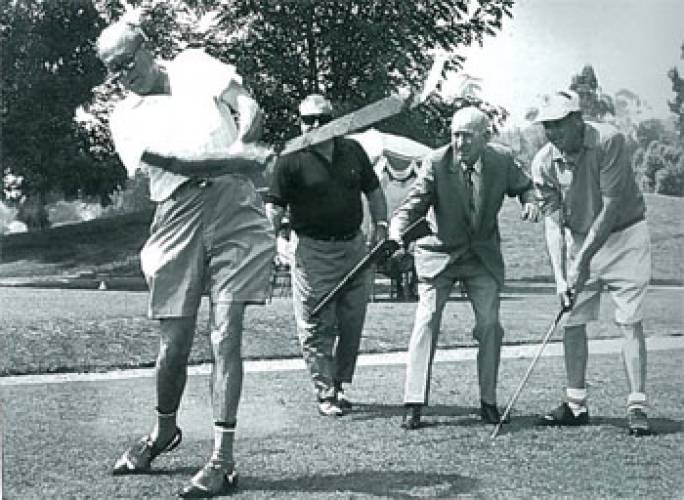 Geiberger, who lost to Bud Bradley in the finals of the 1954 U.S. Junior Amateur, won the 1956 SCGA Amateur at Santa Ana CC and came back three years later to duplicate that feat at Oakmont CC. The lanky Geiberger, who along with Bradley and Stockton played at USC under golf coach Stan Wood, turned professional in 1959. He went on to capture 11 PGA Tour titles, including the 1966 PGA Championship, and on June 10, 1977 became the first player to break 60 in a Tour event when he carded a 59 in the Danny Thomas-Memphis Classic.
Geiberger, who lost to Bud Bradley in the finals of the 1954 U.S. Junior Amateur, won the 1956 SCGA Amateur at Santa Ana CC and came back three years later to duplicate that feat at Oakmont CC. The lanky Geiberger, who along with Bradley and Stockton played at USC under golf coach Stan Wood, turned professional in 1959. He went on to capture 11 PGA Tour titles, including the 1966 PGA Championship, and on June 10, 1977 became the first player to break 60 in a Tour event when he carded a 59 in the Danny Thomas-Memphis Classic.
One other local golfer who went on to professional immortality was San Diego's Mickey Wright. Mary Kathryn Wright won the 1952 U.S. Girls Junior Championship, the 1954 World Amateur and was low amateur in the 1954 U.S. Women's Open. After turning professional in 1955, Wright went on to win 82 LPGA tournaments in a 26-year career, including four U.S. Women's Open Championships. In 1961, she won three of the LPGA's four "majors" and two years later won 13 LPGA titles, 40% of the tour's schedule that year. She was inducted into the LPGA Hall of Fame in 1964.
Chapter Eight -- National Championships and Professional Events
The emergence of Southern California golfers, the growing renown of the area's courses, and the success of the Los Angeles Open brought the pro tour and national championships to Southern California during the 1940-1960 era.
Begun in 1926, the Los Angeles Open (now the Nissan Open), one of the oldest events on the PGA Tour, was played on a number of private and public courses during its first 20 years. In 1945, it returned to Riviera CC where it would remain for nine years, an era that saw a number of memorable moments beginning in 1945. That year was notable because Sam Snead birdied the 18th hole to win the first of two titles and even more importantly for the fact that Babe Didrickson Zaharias became the only woman ever to play in the event.
However, the name most associated with the L.A. Open is, indisputably, Ben Hogan. "Bantam Ben" finished second to Byron Nelson in 1946, then won back-to-back titles in 1947 and 1948, setting the stage for his record-setting victory in the 1948 U.S. Open.
In 1950, less than a year after his near-fatal car crash, Hogan returned to Riviera only to have his "Hollywood ending" spoiled by Snead, who birdied the final two holes to force a playoff. A week later (due to weather-related problems), Snead defeated Hogan in an 18-hole playoff, but Hogan went on later that year to cement his legendary status by winning the U.S. Open at Oakland Hills.
The L.A. Open wasn't the only pro tournament to be played; Oakmont CC, Inglewood GC and other courses also hosted events and in 1952 the San Diego Open (now the Buick Invitational of California) began its life at San Diego CC.
Although The Los Angeles CC had hosted the 1930 U.S. Women's Amateur and Hillcrest CC had been the site of the 1926 PGA Championship, the post World War II period saw several other national championships appear in Southern California, beginning with the 1948 U.S. Open at Riviera CC, the first time the event had been held on the West Coast.
At 7,020 yards, Riviera was also the longest course ever used for an Open and it was in this tournament that the George Thomas, Jr.-designed layout gained its nickname of "Hogan's Alley" after Hogan's 8-under-par 276 for the four rounds set a tournament record.
The following year, the USGA brought the Amateur Public Links Championship to the newly built Rancho Park GC, a few miles from Riviera, and in 1954, the U.S. Junior Amateur Championship was held at The Los Angeles CC, where Bud Bradley defeated Al Geiberger in an all-SCGA final.
Although they didn't have the notoriety that exists today, two Ryder Cup matches were held in the Coachella Valley, with Thunderbird CC hosting the 1955 matches and Eldorado CC playing host four years later.
Chapter Nine -- Winning the Proposition 6 Battle
As the region was moving into nationwide prominence, so too was the SCGA growing far beyond merely an organization which ran tournaments. With the rapid growth of golf in post-World War II Southern California came a series of concerns in the areas of legislation and taxes, and the SCGA began to act as a coordinator of financial and personnel resources in these areas.
Throughout 1950s, the SCGA was instrumental in a long court battle that helped maintain the "independent contractor" status of caddies. But perhaps nothing that the SCGA did in the two decades following World War II equaled in importance the drive to win passage for Proposition 6 in the 1960 general election.
The battle over Proposition 6 was the culmination of a decades-long struggle over how golf courses should be taxed. Increasingly after World War II, the state of California and county boards of supervisors continued to raise levies on nonprofit golf courses by taxing them on the basis of their "fair market value" based on surrounding commercial and residential real estate, rather than on their recreational use value. More than 100 golf courses throughout the state closed due, at least in part, to penal taxation.
It took nearly a decade to reverse the taxation tide, but finally the state legislature passed a law which mandated that golf courses be taxed for recreational use. However, legal challenges required the state constitution to be amended and the vote on that change (which became Proposition 6) was hard-fought for more than a year.
SCGA minutes from that era reflect the thousands of hours put in by association directors, representatives from clubs throughout the association and two professional firms hired to spearhead the campaign. At the heart of the effort was a massive educational effort to help nongolfers understand that golf courses are a benefit to the entire community, not just to golfers. When the measure passed, it insured the survival of many clubs and paved the way for even more golf course expansion in the coming decades.
Epilogue -- Even Greater Expansion to Come
The successful fight to pass Proposition 6 was just one example of the increased maturity and importance of regional golf associations, such as the SCGA. Although the SCGA's core programs -- tournaments, team play and handicapping -- remained at the forefront of its activities, the association was also taking more of a public stance, as well.
In its dealings with the United States Golf Association, the SCGA sought to insure that its views and that of its members were well known and considered in areas such as rules and handicapping.
Locally, the SCGA continued throughout the next decade to lead the fight for fair taxation for clubs and to help marshal resources in other important public policy arenas, lending financial support and coordinating with clubs in legislative efforts and, where necessary, court tests.
The next two decades would see even greater expansion, with the founding of FORE Magazine, the establishment of the electronic handicap system, the construction of Golf House West, and other important milestones.
The 1960s and 1970s would also be a time of rapid golf course expansion and an era when Southern California golfers continued to make their presence felt on the national scene.
- The next great wave of golf course construction
- The PGA Tour comes of age
- FORE Magazine is begun
- The building of Golf House West
- and more!
